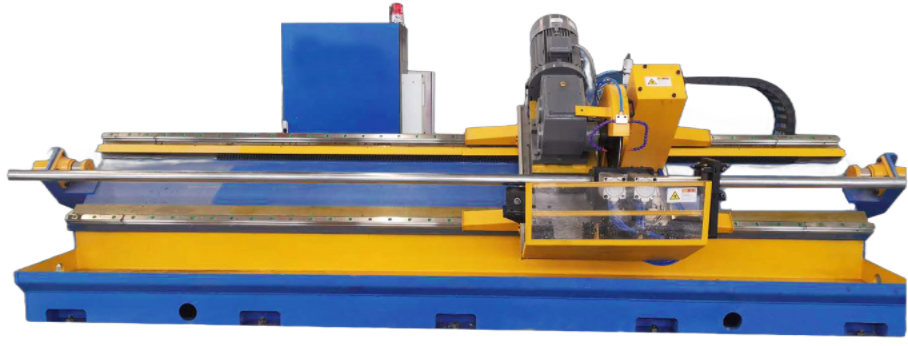aluminum profile roll forming
Aluminum Profile Roll Forming A Comprehensive Overview
Aluminum profile roll forming has emerged as a pivotal manufacturing process in the metalworking industry, revolutionizing the production of complex shapes and profiles. By leveraging the unique properties of aluminum combined with advanced roll forming techniques, manufacturers can produce lightweight, durable, and corrosion-resistant components for a variety of applications.
Understanding the Process
Roll forming is a continuous bending operation in which long strips of metal are passed through consecutive pairs of rolls to achieve the desired cross-sectional profile. This method is particularly advantageous for aluminum, as it allows for high volumes of production with exceptional precision. The process begins with a flat aluminum sheet, which is fed into a series of forming rolls. Each set of rolls gradually shapes the metal by bending and forming it into a desired profile, which can include channels, angles, and other complex shapes.
The machinery involved in roll forming—comprised of roll forming machines, cutting units, and conveyor systems—has evolved significantly over the years. Modern equipment is often equipped with computer numerical control (CNC) technology, allowing for precise adjustments and customization of profiles based on specific design requirements. This technological advancement has made it feasible to create highly specialized aluminum profiles that meet the unique needs of various industries.
Advantages of Aluminum Profiles
Aluminum's intrinsic properties provide several advantages that make it a preferred material in many applications
1. Lightweight Aluminum is significantly lighter than other metals, which reduces shipping costs and simplifies installation processes. 2. Corrosion Resistance Unlike many metals, aluminum naturally forms a protective oxide layer, making it resistant to rust and corrosion. This quality enhances its lifespan, particularly in harsh environments.
3. Versatility Roll forming allows for an extensive range of shapes, accommodating countless design requirements. From automotive components to architectural elements, aluminum profiles can be tailored for varied uses.
4. Cost-Effectiveness High-volume production through roll forming reduces unit costs. The ability to produce large quantities of identical profiles also minimizes waste material, leading to greater overall efficiency.
aluminum profile roll forming

Applications of Aluminum Profiles
The versatility of aluminum profiles produced through roll forming enables their use in numerous industries, including
- Construction Aluminum profiles are widely used in architectural applications such as window frames, door frames, and cladding systems due to their aesthetic appeal and durability. - Automotive In the automotive industry, aluminum roll-formed profiles are used for structural components, trims, and heat exchangers, helping to reduce vehicle weight and improve fuel efficiency.
- Aerospace The aerospace industry relies on aluminum profiles for various components, taking advantage of their strength-to-weight ratio and resistance to fatigue.
- Electrical In electrical applications, aluminum profiles serve as housings and conduits, providing protection while maintaining excellent thermal and electrical conductivity.
Future Trends in Aluminum Profile Roll Forming
As industries increasingly look towards sustainable practices, aluminum's recyclability and environmentally friendly properties will undoubtedly drive its demand. The roll forming process itself can also be enhanced by the integration of green technologies, reducing energy consumption and minimizing waste.
Moreover, advancements in automation and smart manufacturing technologies promise to further optimize the roll forming process. The incorporation of Internet of Things (IoT) devices and artificial intelligence (AI) into machinery will provide real-time monitoring and predictive maintenance, ensuring minimal downtime and higher productivity.
Conclusion
Aluminum profile roll forming represents a dynamic intersection of innovation and functionality in manufacturing. Its ability to produce custom shapes efficiently while harnessing the inherent advantages of aluminum positions it as a key player in shaping the future of various industries. As technology continues to evolve, we can expect the process to become even more refined, sustainable, and integrated into modern manufacturing paradigms. This ongoing evolution underscores the importance of aluminum profiles in meeting the demands of a rapidly changing world, making it a crucial area of focus for manufacturers and engineers alike.
-
High Frequency Straight Seam Welded Pipe Production Line-BzZhou Xinghua Machinery Equipment Manufacturing Co., LTD.|line pipe steel&welded gas pipeNewsJul.30,2025
-
High Frequency Straight Seam Welded Pipe Production Line-BzZhou Xinghua Machinery Equipment Manufacturing Co., LTD.|High Precision&Automated SolutionsNewsJul.30,2025
-
High Frequency Straight Seam Welded Pipe Production Line - BzZhou Xinghua Machinery Equipment Manufacturing Co., Ltd.NewsJul.30,2025
-
High Frequency Straight Seam Welded Pipe Production Line-BzZhou Xinghua Machinery Equipment Manufacturing Co., LTD.|Precision Welding, High EfficiencyNewsJul.30,2025
-
High Frequency Straight Seam Welded Pipe Production Line|BzZhou Xinghua|Precision Welding&EfficiencyNewsJul.30,2025
-
High Frequency Straight Seam Welded Pipe Production Line - BzZhou Xinghua|Precision Engineering&EfficiencyNewsJul.30,2025


